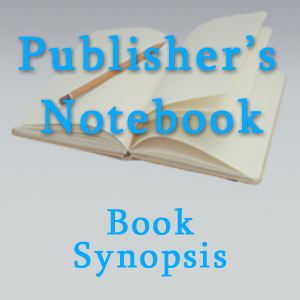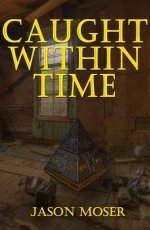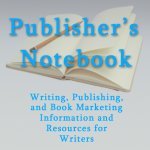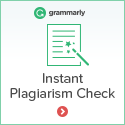A Book Synopsis Keeps Your Writing on Track and Helps Get it Published
Book synopsis is not a term you usually hear unless you are getting ready to publish a book. The first time I heard about it was when a literary agent asked me for one to go along with my application.
Of course I had no clue what it was. I had to do a bunch of research and soon discovered I had to figure out how to shift gears from novel writing to summary writing.
What is a Book Synopsis?
A book synopsis is a detailed summary of major points of your written work, either as prose (which is preferred) or as a table (if for your own use).
Your synopsis, otherwise known as an abridgment or condensed version of your work, is great for several reasons and can be written before or after your actual book has been completed.
What is a Synopsis Used For?
Most literary agents and publishers prefer a book synopsis over an actual manuscript as a review tool to see if your book will be worth their time and effort. Most publishers will reject a manuscript by itself simply because they don't have the time of day to review the entire novel to see if it is worth it to them or not.
Another way you can use a book synopsis is as an outline to help guide you through the writing process of your novel. Little did I know that this is my preferred method of outlining my books from start to finish and keeps me on the right track throughout the writing process.
My first actual synopsis was written as I was submitting my first self-published book, Spy Among Spies to a literary agent. Before then, I had never even heard of a synopsis or what they were for. So, I had to do some research to find out what a book synopsis is and what it is used for so I could actually write one.
Needless to say, I believe it was one of the most difficult things to write in my life, especially for someone like me who loves to write in a lot more details.
Writing a book synopsis is very challenging and fun at the same time. You must make it a strong point to bring out your main characters, the main points of your story for each chapter, and piece it all together in a logical paragraph by paragraph format that is simple to read, but no more than two pages long.
Talk about a difficult task! It is especially difficult when you are writing a synopsis for a 200 page book with lots of characters and chapters.
Use Your Synopsis to Get Your Books Published and For Interviews
You must learn how to write a book synopsis if you want to traditionally publish your book. This is how you sell your idea, get them interested, and get them to contact you for your actual manuscript.
Writing a synopsis gives you a much better chance at getting published than by blindly sending manuscripts and query letters alone.
A synopsis isn't just for agents and publishers. They are also great for submitting with a press kit to media outlets during interviews to help them get to know what your book is about without taking the time to read the entire thing.
An abridgment of your book is a great tool to help sell your fiction or non-fiction idea to a prospective publisher or agent. It should be included with all submissions to publishers and is the most likely the first thing the publisher or agent will read when they look at what you are submitting.
How to Write a Book Synopsis
Writing a book synopsis was one of those things I wished I knew before I started writing all of my books, but now that I learned how to write one correctly, it helps me outline my entire book before I begin the writing phase.
Make sure it is grammatically correct and that everything in your synopsis is spelled correctly so you make a great first impression with a prospective publisher.
Fiction and non-fiction synopsis write-ups differ in many ways. There's one great resource I found that helped me learn how to write a book synopsis for both fiction and non-fiction.
For your fiction, a well organized and written synopsis tells a prospective publisher the who, what, where, when, and how of your story. It is recommended that you leave out the why in your fiction synopsis as this is definitely not the place to cite purpose or inspiration for your book or writing.
Your synopsis is your first and probably your last chance to introduce and sell your idea to the publisher. If they don't like your synopsis, they probably won't even open your manuscript.
For non-fiction, your main goal is to outline how your book will solve a problem within your book's topic. With non-fiction, readers are looking for solutions, and publishers understand that. Your outline must be in a logical order, describe the problem you want to solve, and hit all of the major points of solution.
It is very important that you immediately grab your reader's attention right away. You must keep it brief (a few paragraphs at the most), and you want your message to be absolutely clear about the direction of your story.
You must write your book synopsis from the publisher's point of view. They receive several submissions each day for every genre and they rely on your synopsis to give them a detailed peek into your manuscript in order to quickly determine if your book is good for their target market and if book sellers will want to order the book to sell to their customers.
Start your synopsis with a great hook or angle to magnetically entice your readers and make your manuscript stand out from the many others they are looking at within the same genre.
Next, you must introduce the main concept or concepts of your book within the first couple of lines.
Think of your synopsis as a master summary of all of the chapters in your book. You want to include one or two sentences for every chapter to step through your entire book in order.
Important Points to Remember When Writing a Fiction or Non-Fiction Synopsis
1. Always write your book synopsis in the present tense no matter what tense your story is written in.
2. Do not use flowery or fluffy prose to express the points throughout your synopsis. Save that for your story itself.
3. Your synopsis is used to "sell" your book idea to the publisher. No more, no less.
4. In order to properly sell your story, you must distinguish your novel from others in the genre. There are many other novels out there with similar themes, so use your synopsis as your advertisement without actually selling your book. A synopsis is truly a work of art in itself, and used to sell your writing, so take care to make it as distinctive as possible.
5. Give a chapter-by-chapter summary of your book. A summary of a chapter is only a couple of sentences including your main characters and a particular "thing" they are doing in that chapter. With non-fiction, include your main points and how they relate to the solution.
Together, your summary gives a publisher a professional and polished overview of the book so they can make an informed decision whether to set your book in their stack of potential manuscripts.
Knowing how to write a book synopsis correctly is one thing. Knowing how to actually draft it up for submission is another. You should always contact a prospective agent or publisher and ask particular submission details before sending in your book package.
As a standard, a publisher will be looking for information such as the current title for your work, your synopsis, the length of the work (number of words), the market and demographic focus, genre you are targeting with your story, the description of the main character, and description of the supporting characters.
Of course, you should always provide a brief description of your personal background, better known as your author biography. It helps them know a little more about you. This is where you add in your why, but keep it brief.
A book synopsis and query letter will work hand-in-hand as they can be written at the same time since they serve pretty much the same purpose. The query letter is more like a cover letter and your synopsis is like your resume.
When submitting your book synopsis to a publisher, you should always include a query letter, your brief biography, your synopsis, and a full copy your professionally edited manuscript. Again, make sure this is what the prospective publisher wants before sending all of it to them.






